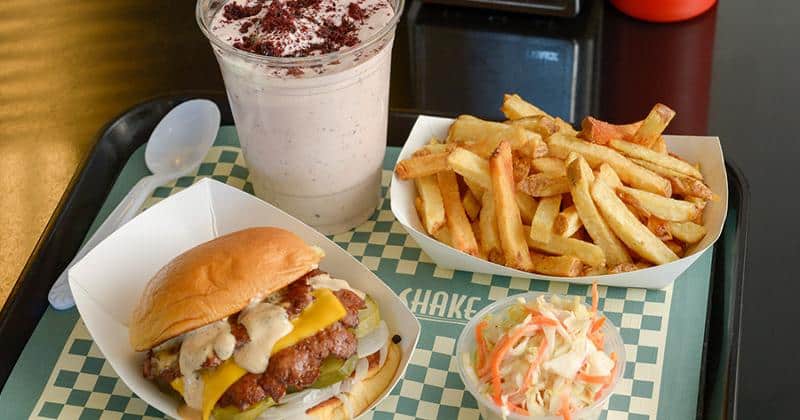This article originally appeared in Restaurant Business.
To keep costs in check, operators are frequently evaluating vendors, re-engineering the menu, running specials and keeping a closer watch on inventory and waste to avoid more price hikes.
First it was meat. Then rice, produce, crab and baking potatoes.
These are all core menu ingredients at Black Angus Steakhouse—all of which skyrocketed in price at one time or another over the last year or so, said Deborah Shapiro, VP of growth for the 32-unit Los Angeles-based chain.
Like other operators, Black Angus has had to raise menu prices to make margins, “but you can’t raise prices too high or we’ll price our value customer—our core—out of the market,” she said. Back in April, the chain’s menu prices went up by 3%, “small for a steakhouse,” Shapiro said. “Most took 6%.”
Instead, Black Angus aims for volume, building traffic by offering special “bundled experiences,” closely watching what sells and not hesitating to change up the menu. The math has to work.
“We have to sell this many of an item to make a profit,” she said. “If we’re not making a profit, we’ll take it off the menu.”
Vigilance pays dividends
With the wild food cost fluctuations restaurants have experienced recently and the real potential of a recession in 2023, operators have to be much more vigilant than in the past, explains Tony Smith, CEO of Restaurant365, a restaurant management software company.
“Average wholesale prices jumped 17.8% between 2021 and 2022, representing the largest 12-month increase in nearly five decades,” said Smith. “It’s now essential to engage in regular and frequent cost reviews through the week, not just at the end of the month. If things seem out of balance, check supplier contracts to make sure vendors are abiding by them.”
And he agrees with Black Angus’s math. “You may have to eliminate menu items that cost too much,” said Smith.
Smith believes in running a renegotiation of pricing when you can, and partnering with multiple vendors, if possible. “Having the option of multiple suppliers gives strength in the market,” he said.
Feeling the squeeze
For Harlem Shake, a burger-and-shake concept with two locations in New York City, the limited menu makes it tougher to remove an item. It’s also tougher to negotiate with suppliers.
“Broadliners look at small operators as the least profitable—just like that menu item that isn’t selling,” said founder Jelena Pasic.
To protect against unreasonable food cost surges, she relies heavily on technology, using a platform that connects operations and purchasing.
“I can see price elasticity across the board and compare commodity costs religiously,” Pasic said. “If a vendor changes price and it doesn’t match or looks like an outlier, I’ll first have a conversation. Then if I don’t get satisfaction, I’ll switch vendors.”
Last March, Pasic did have to bump up menu prices slightly but didn’t get much pushback. “Customers are in the know about inflation and understand, but I can’t do that again in the next few months. I think it will keep people away,” she said.
In the meantime, she frequently checks the menu mix. Although Harlem Shake’s menu is pretty concise, she looks at items that may be too pricey or not profitable. Pasic used to serve breakfast, and it was popular, but the labor and extra inventory cut into profits, so Pasic eliminated it.
Keeping tabs on inventory
As a small operator, Pasic is finding that ordering products ahead when prices are stable and pre-paying for staples can save money. This strategy helps with shelf-stable items such as paper goods, condiments and the Italian fruit syrups she imports for the milkshakes. “With two stores, I now have enough storage space,” she said.
Inventory management is key to controlling food costs and waste, agrees Smith. “Track what you have in stock and make sure the top 10 items are always in good supply,” he said. Last-minute purchases are often the most costly.
Operators also should calculate the difference between theoretical and actual food costs.
According to Restaurant365, theoretical food cost is what your food costs should be, given the current cost of all ingredients, over a period of time. Actual food cost is the real amount that a restaurant spent on ingredients over the same period of time. The difference between these two numbers accounts for imperfect portion sizes, improper invoicing, kitchen waste or employee theft.
Smith suggests inputting all recipes into the management system to check purchases against sales data. This gives a clearer picture of where the cost discrepancies lie and where an operator might be over-portioning or wasting food.
Waste control is a day-to-day priority for The Halal Guys, the 106-unit fast casual focusing on bowls and gyro sandwiches. Even though the concept is known for its oversized portions, “we figure out the yield for each product to eliminate waste,” said CEO Ahmed Abouelenein.
Chicken is the major protein purchased and although prices went haywire last year, they’ve since stabilized, said Abouelenein. Plus The Halal Guys purchases less volatile legs and thighs for the menu and the large volume allows the chain to lock in prices with distributors. Now produce, especially lettuce, is up.
The Halal Guys raised menu prices 5% to 7% over the last two years, in line with the fast-casual segment, and the average check is now $18 to $23, but that hasn’t impacted traffic or sales, said Abouelenein. It’s also about the value customers see in those large portions.
“We haven’t decreased portion sizes and our customers ‘eat for the leftovers’—they take home the uneaten portion and have it for a second meal,” he said. “More diners are catching on to this strategy as they look to stretch their dollar.”
The value of the experience
At meat-centric Black Angus Steakhouse, high-end proteins like Certified Angus beef, lobster tails and snow crab sourced for the menu can be pricey, but the brand is also committed to giving a large amount of quality food at a relatively low price.
“When inflation hit we asked ‘how can we solve this with new experiences instead of taking price,” said Shapiro. “These bundled experiences raise the average check for the restaurants but at the same time, the guest gets better value.”
The whiskey pairing dinner is a good example. “We charge $42 and the customer gets three cocktails and a three-course chef-curated dinner,” said Shapiro. “Purchased separately, it would cost the customer $50 to $70.” But the attractive price sells a lot more of the dinners.
There’s also a wine flight, offering three 3-ounce pours for $9, the same price as half a carafe but “guests wouldn’t ordinarily order a half carafe. We created an experience where the guest wants to spend the $9 to taste three different wines.”
This fall, the chain debuted a special series called “New Experiences,” which includes a wine pairing dinner like the whiskey version and a New York Steak Flavor Flight. The latter features a flight of three pieces of New York strip steak with three different toppings. It’s $34.99, the same price as a grilled New York strip but it’s a better experience for the guest, said Shapiro.
The bundled experiences are designed to drive traffic, increase volume and boost checks.
Black Angus purchases its beef from several sources and sets long-term prices, but some of these specials are based on promotional cuts that yield higher profits. The brand also steers guests toward these items through marketing and menu engineering.
Restaurant365’s Smith is a big fan of menu engineering. Restaurants can push items that are the most profitable and popular by positioning them visibly on the menu, promoting them to loyalty club customers or offering them as limited-time options. “If something is popular but not profitable, you may have to charge more, and if something is profitable but not popular, you may have to push it more,” said Smith.
While many operators raised prices two or three times from 2021 to 2022, fear of recession means there will be more resistance in 2023, he believes. “Restaurants won’t be able to raise prices more than once next year. They’ll have to find other ways to drive profitability.”



